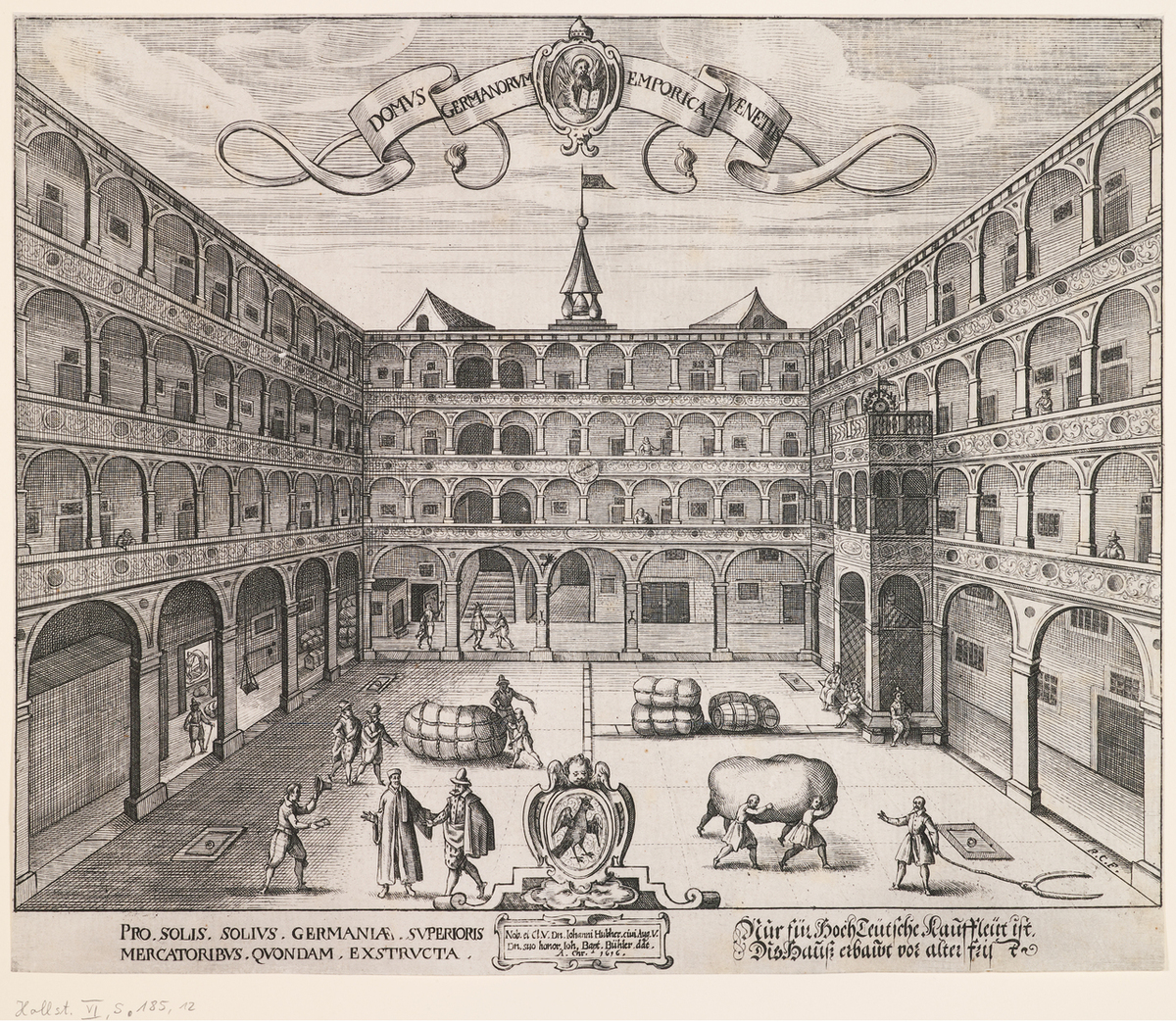Fondaco dei Tedeschi (1616)
Abstract
“Fondaco“ was the Italian term used for self-contained building complexes that served both as trading posts and storehouses for merchants belonging to the same “nation.” The best-known building of this kind is the “Fondaco dei Tedeschi” in Venice, which accommodated German merchants since the first half of the thirteenth century. The buildings served a dual purpose: as storehouse and sales facility. The “fondaco” also housed a wine tavern and a chapel to cater to the merchants’ physical and spiritual needs. This engraving shows the inner courtyard of the building and the inscription states that this facility had been built “exclusively for Germans.”
Source

Source: Inner courtyard of the German trading post in Venice, copperplate engraving by Raphael Custos, Domvs Germanorvm emporica, 1616. Germanisches Nationalmuseum Nürnberg, Graphische Sammlung, Inventar-Nr. HB 2300, Kapsel-Nr. 1228. Photograph: Georg Janßen.
© Germanisches Nationalmuseum